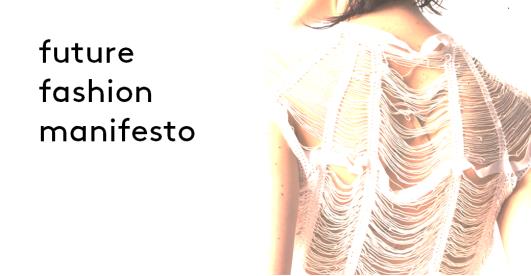In the future fashion industry it will be all about taking full advantage of the garment throughout its life-cycle. This will be central for how new business models will evolve, how users’ behavior and attitudes will change, how the design process gets optimized, and how used textile will be regenerated into new textiles. Mistra Future Fashion presents a foresight on future industry based on four years of research results. By using a garment three times longer than usual, the reduced environmental impact would be nearly 70%. And with a conscious design process it is possible to get up to 41% more efficient and sustainable production. Transport for shopping to and from the store is equivalent to 25% of a garment’s carbon footprint, while the importance of washing at lower temperatures proves to be just 1%.

Now four years into the program, research findings and insights has been gathered in a manifesto, summarizing the research results on sustainable fashion and visualizing a new system and within what key areas the industry needs to progress. It was presented in an event in Stockholm September 29th 2015 to its consortium members and others with interest in sustainable fashion.
The key to success is therefore to maximize the garment by:
- Go from one to multiple business models
- Ask the right questions about the garment’s use and purpose, which gives the opportunity to explore new products and services that generate profits multiple times on the same garment
- Emphasize the importance of the garment life and use, which allows for scaling up services such as fashion library, renting, sharing, vintage fashion, design services etc.
- Observe several possible lifetimes of clothing, the instant consumption and recycling, and for a long life
- Invite and involve consumers
- Enable consumers to act sustainably, they are ready, but there is a clear gap between attitude and behavior because there are no alternatives
- Take advantage of today’s information society and social media easy access to evoke options and increase awareness among consumers about what they can do
- Use the consumers’ incentive to create awareness and change, they are motivated by the win-win aspect of acting sustainably, it’s motivating that there will be a gain for the individual, for others and for the planet (as opposed to debt)
- Design more consciously
- Give the designer opportunities and tools to utilize their full potential in all design decisions (which can affect up to 90% of impact), with new sustainable fibers, better organizational influence, relevant design tools and more knowledge about what affects the environment
- Develop strategic design thinking that can both significantly improve the environmental impact of existing products (by up to 41%) but also create break-through innovations
- Design garments based on its intentional life and optimum use, including recycling
- Enable recycling
- Increase the understanding of how materials decompose in the use phase, this is the crucial knowledge in the development of new technology for the regeneration of recycled fibers to high quality
- Optimize the garment’s lifetime by a viable collection system that prevents the garment is lost prematurely as waste and incinerated
- Develop new technology that allows automatic sorting and chemical dissolution of fibers, it is essential to minimize the waste of worn-out clothes and create the new raw material of worn fibers



